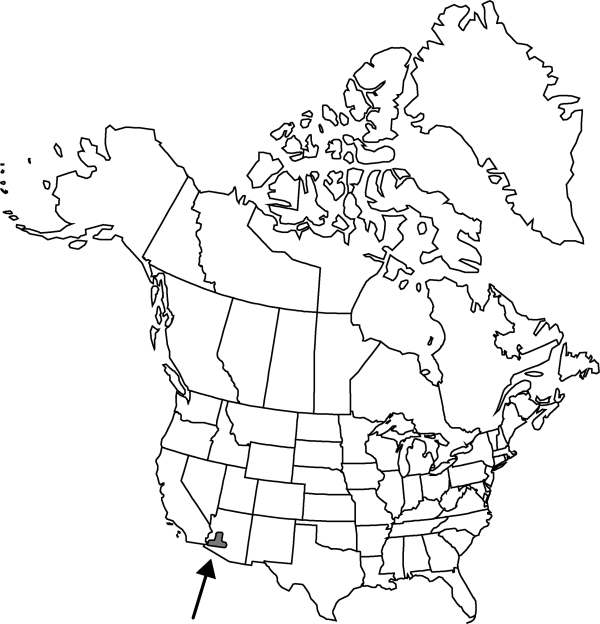Ferocactus emoryi
Cactography 1926(1): 5. 1926.
Stems erect, spheric to ovoid-cylindric, 30–90 (–250) × 30–60 (–100) cm; ribs (15–) 21–32, shallowly notched immediately above each areole. Spines 6–10 per areole, reddish, reddish gray, or horn colored, all robust and rigid, more than 1 mm diam.; central spine 1, curved (hooked only on relatively young plants), annulate, thick, adaxially flat, 55–95 (–130) × 2.5–4 mm. Flowers reddish outside, brilliant red inside, 6–7.5 × 5–7.5 cm; inner tepals brilliant red [yellow]; stigma lobes brilliant red. Fruits ± readily dehiscent through basal pore, bright-yellow, 25–50 × 25–35 mm, leathery or fleshy, locule dry, hollow except for seeds. Seeds 2 mm, pitted. 2n = 22.
Phenology: Flowering summer–early fall.
Habitat: Hillsides, wash margins, alluvial fans, mesas, or flats, gravelly rocky or sandy soils, rocky slopes and adjacent bajadas, Sonoran desert scrub, igneous substrates
Elevation: 0-1200 m
Distribution

Ariz., Mexico (Sonora)
Discussion
Ferocactus emoryi has a confused taxonomic history. The name is based on Echinocactus emoryi, which was published twice by Engelmann, each involving a different species. Engelmann’s first use of E. emoryi [in W. H. Emory]—applied to a population of Ferocactus wislizeni in eastern Arizona—is rejected as provisional and therefore invalid. However, Engelmann’s second use of E. emoryi was a valid publication, and it unambigously pertains to the species in southwestern Arizona that Britton and Rose unncecessarily renamed as Ferocactus covillei.
Selected References
None.
